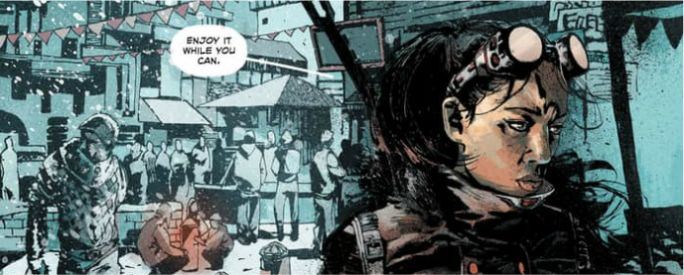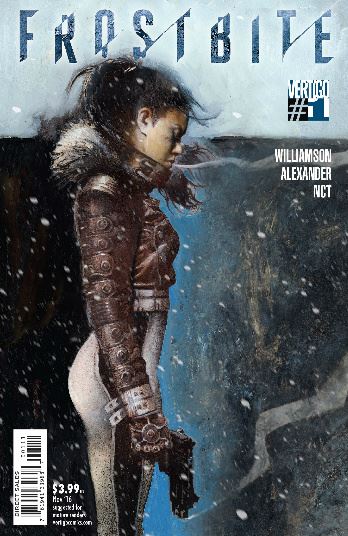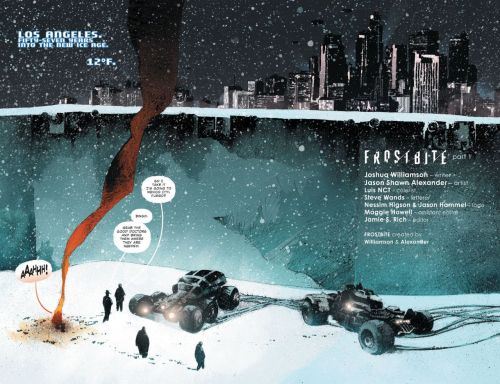- Comics
- Comics Reviews
- Manga
- Comics Reviews
- European Comics
- News
- Comics News
- Press Releases
- Columns
- Spotlight
- Digital Comics
- Webcomics
- Cult Favorite
- Back Issues
- Webcomics
- Movies
- Toys
- Store
- More
- About

By Zak Edwards
October 18, 2016 - 09:40
For the sake of this review, I will be using Celsius to discuss temperature because it’s a system that makes sense.
The world is overwrought with dystopian fiction, perhaps no more so than in comic books. Every Wednesday, they seem to clutter up the shelves, so to stand out, you have to make a lasting impression. I think about Gus staring into the eyes of a deer in Sweet Tooth, Yorrick wrestling with a straight jacket while calling Beth in Y: The Last Man, the twist at the end of Bitch Planet #1, or even the opening issue of The Dark Knight Returns. Each of these dystopias had clear, distinct visions of the future backed up by thorough research. They had moments to grab you and keep you reading.

Frostbite, unfortunately, is not that book and has no such moments. Instead, it’s a fairly generic story of mad scientists, alternative currencies (heat=money), a mysterious virus/disease, and anti-heroes trying to eke out a job. It’s a book that has all the pieces, but the pieces feel like they were checked off a list. I could make up a metaphor about Frostbite’s generic approach by saying something about bones covered up by snowdrifts, but I guess this will do just fine.
And as a side note: as someone who grew up in one of Canada’s northernmost major cities, the threat of -12 degree weather doesn’t really feel apocalyptic. Edmonton would frequently hit the -20 mark for long stretches of time. -12 is positively tropical.
Of course, staying the course in genre also has its advantages. Writer Joshua Williamson has enough confidence in his readers as to not load the first issue with too much info-dumping. Instead, we’re introduced to the world through Keaton, the series’ protagonist, whose attempts to find work introduces readers to the world succinctly and naturally. The first few pages are loaded with speech bubbles, but they don’t lay out a status quo. They show people conversing, interacting, and living their fairly mundane, post-apocalyptic lives. It’s a strong approach, probably afforded simply because the conventions are so obvious.
Stronger still is Jason Shawn Alexander and Luis NCT’s art. Particularly striking is Alexander's pencils and the details he provides. When needed, he can provide beautiful and detailed panels, including ice-laden streets of Mexico City that feel real. But he can let the snow wash over the details just as quickly, leading to some beautiful design choices. Even as the art lacks a certain mobility, the dirtiness, grittiness, and beauty manages to come through, page after page. By the time Alexander’s art fades away in a snowstorm in the final panel, you’ll want to go back and pour over what he and NCT have created.
 |